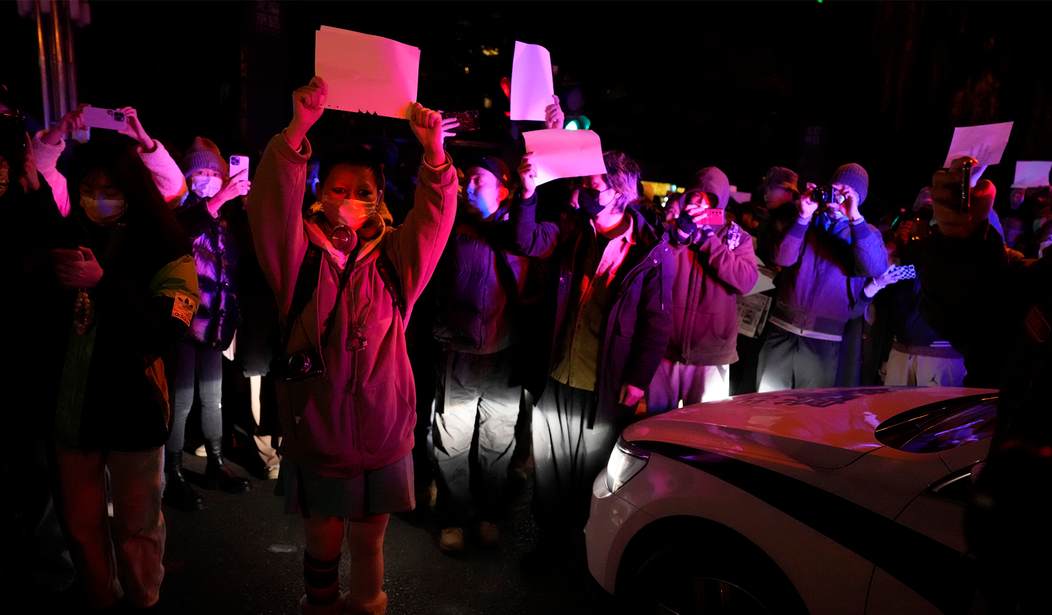The Communist Chinese leaders got a royal scare thrown into them the past week when hundreds of thousands of people defied the state and marched to end the draconian “zero COVID” policy that most people saw as unnecessary.
The government can’t lift restrictions entirely because its short-sighted stupidity kept its population in virtual isolation for three years and prevented them from acquiring natural immunity to COVID-19. The consequences could lead to a massive increase in the number of seriously ill citizens and surely many more deaths. Experts are warning that it will be at least mid-2023 before China can fully reopen its economy given the huge numbers of elderly people who have yet to be vaccinated.
Easing up on quarantines, testing, and lockdowns, however, requires a massive re-education program. For three years, the Communists have told the people that COVID was a deadly disease and the restrictions were there to protect the Chinese people. In fact, Beijing made it a part of its anti-Western propaganda, pointing to how uncaring Western nations were. Now, the government must reframe the disease as something far less deadly.
One way to do that is to rename the disease.
China should change its official name for COVID-19 to reflect the virus’ mutation, and patients with light symptoms should be allowed to quarantine at home, a leading authority on traditional Chinese medicine was quoted as saying on Wednesday.
Gu Xiaohong told the state-run Beijing Daily newspaper that the coronavirus’ Chinese name, which identifies it as a pneumonia-causing disease, should be changed to call it simply an infectious virus.
Local government officials must “take strict and detailed measures to protect people’s life, safety and health” but at the same time “minimize the impact of the epidemic on economic and social development,” the government statement said.
The CDC couldn’t have said it any better.
While the shift away from a draconian “zero COVID” policy is welcome, there is still a long way to go before the country can fully reopen, says Dr. Yanzhong Huang, an expert on public health in China.
“When implemented, these measures may generate dynamics that fuel the rapid spread of the virus even though China is not ready for such a dramatic shift,” he told the Associated Press.
As welcome as the easing of restrictions is, there are still vestiges of the old policy that will raise the hackles of Chinese citizens.
Rules were left in place that warn apartment and office buildings might be sealed if infections are found. Complaints that families are confined for weeks at a time with uncertain access to food and medicine were a key driver of the protests.
The ruling party switched early this year to suspending access to neighborhoods or districts where infections were discovered instead of isolating whole cities.
On Wednesday, the government said the scope of closures will be narrowed still further to single apartment floors or buildings instead of neighborhoods.
It said schools in communities with no outbreaks must return to in-person teaching.
And there’s no guarantee that the restrictions won’t be reimposed if the death toll from COVID spikes. In fact, we can expect several episodes of renewed lockdowns — especially far away from major cities where there is little media coverage.
President Xi Jinping and his Communist henchmen got a good scare this last week. Perhaps some Chinese people will note the effect of mass protest on their leadership and seek to duplicate it on another issue.










Join the conversation as a VIP Member